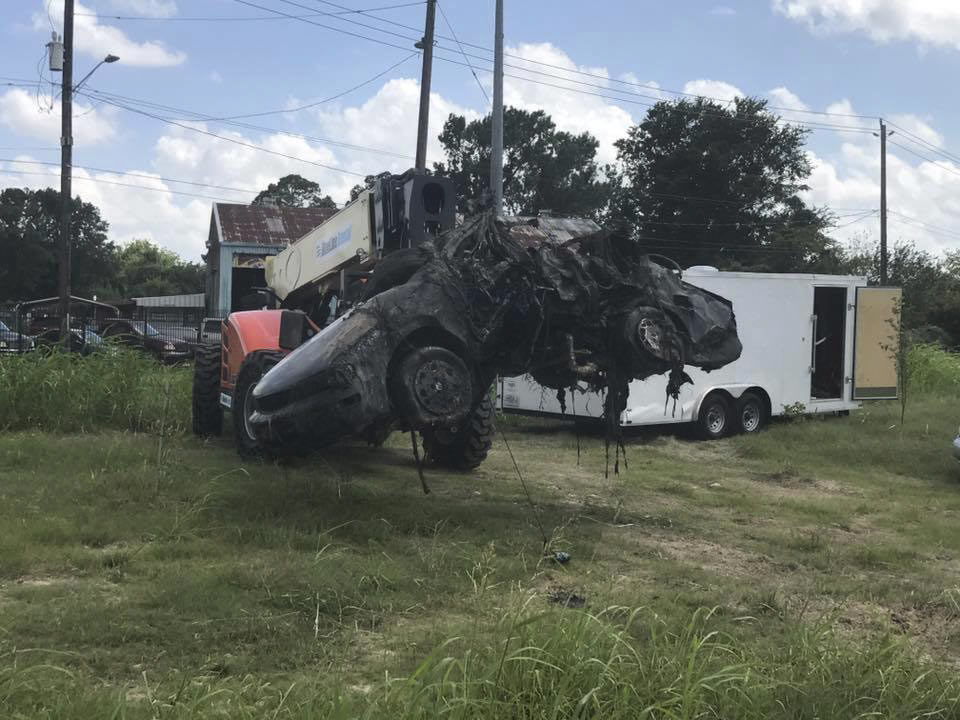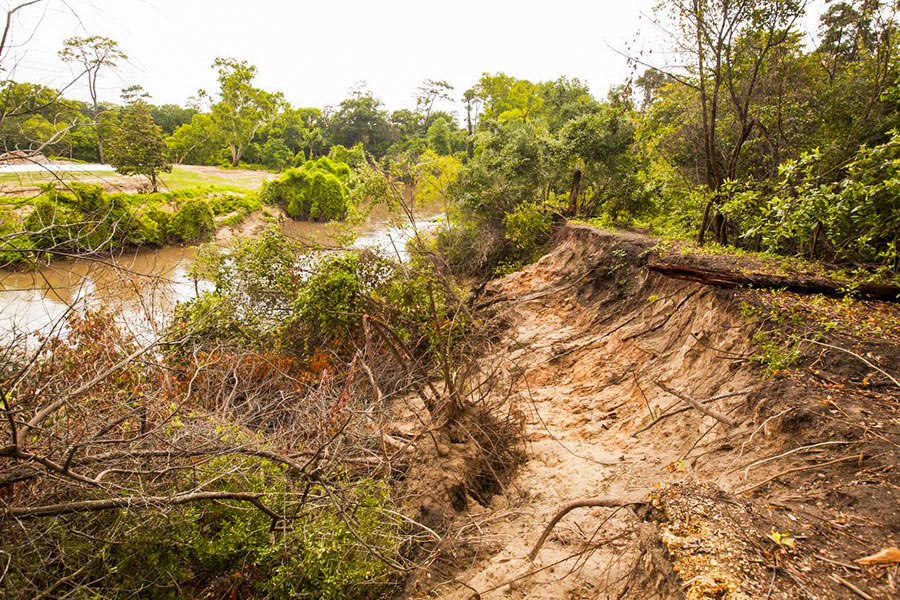
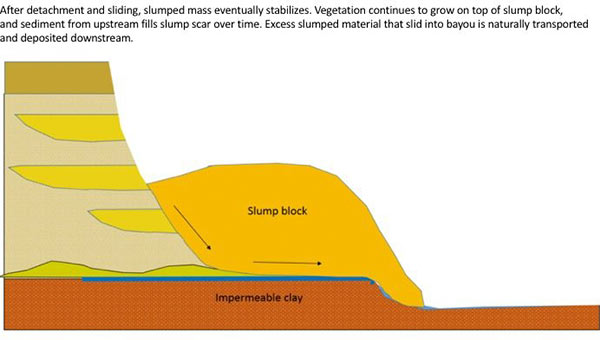
The folks fighting a longstanding battle to prevent the reconfiguration of a section of Buffalo Bayou fronting the southeast corner of Memorial Park and the River Oaks Country Club have posted a remarkable series of images showing how a section of the bayou’s bank at the Hogg Bird Sanctuary responded on its own over the course of 2 years to a soil collapse suffered during the 2015 Memorial Day flood. The geologists behind Save Buffalo Bayou claim that the promoters of the Harris County Flood Control District’s proposed $12 million Memorial Park Demonstration Project they’re trying to stop have mistaken a natural bayou-bank process called vertical slumping (or sloughing) for erosion, and that attempting to stabilize the bayou banks to fix the supposed erosion will leave the area “a wasteland of denuded and weakened banks.”
But you don’t have to buy or even follow the riverine logic the organization steps through in a lengthy article posted to its website earlier this week to appreciate one of the examples of waterway-bank adaptation exhibited there. The first image (at top) shows the immediate aftermath of the Memorial Day storm or 2 years ago on the high bluff facing the bayou at the Hogg Bird Sanctuary in Memorial Park, which stands at the downstream end of the proposed project area. According to the organization, an HCFCD consultant claims that this is one of 4 spots within the bayou area that suffers from severe lateral erosion. But to Save Buffalo Bayou, this isn’t erosion; it’s just a slump, which is what bayous do naturally, and which on their own create the distinctive bluffs on the bayou’s banks. There’s no way to fix a slump, the organization’s geologists say — if left alone it’ll restore itself.
Here’s their photo evidence. The second photo, also from June 2015, shows the slumping — and downed trees:
CONTINUE READING THIS STORY
A Bayou Demonstration Project
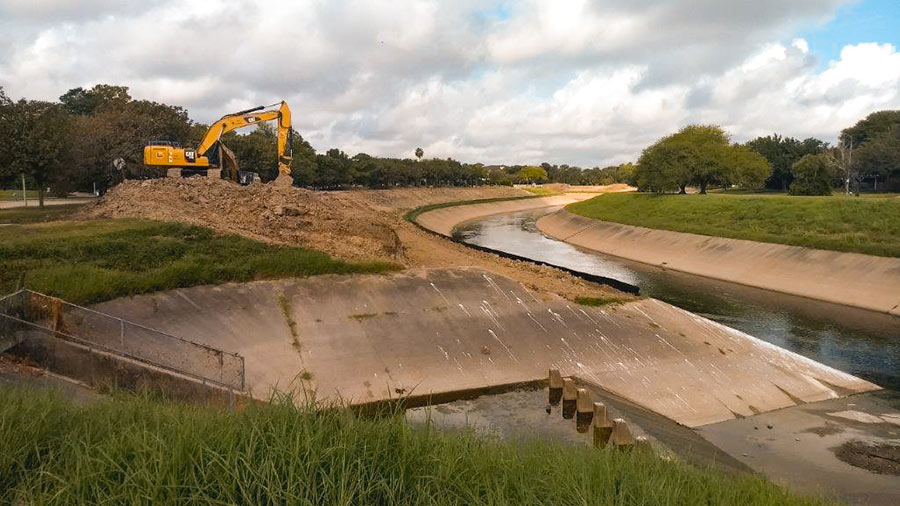


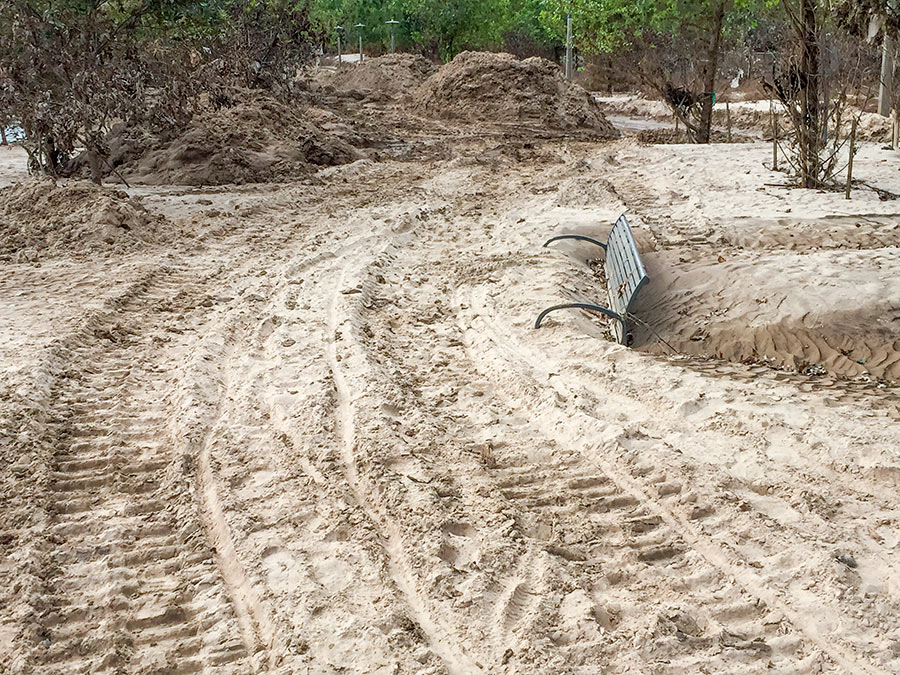
 “Build canals everywhere. Become the American Amsterdam. Rather than a Pierce Elevated park . . . have a canal that can take on additional water from Buffalo Bayou. Canals throughout Montrose, Midtown, Downtown and around Washington. Canals on the East End and through EaDo. Canals near the Med Center to relieve Brays Bayou, and on and on and on again. Give water new dedicated places to go that we can call amenities, and make Houston a more interesting and attractive place to recruit new companies and tourists, because our canals are unique and cool places to hang out. The Dutch know water, so why not copy them.
Then release a ton of GMO mosquitos to kill off the rest of them.” [
“Build canals everywhere. Become the American Amsterdam. Rather than a Pierce Elevated park . . . have a canal that can take on additional water from Buffalo Bayou. Canals throughout Montrose, Midtown, Downtown and around Washington. Canals on the East End and through EaDo. Canals near the Med Center to relieve Brays Bayou, and on and on and on again. Give water new dedicated places to go that we can call amenities, and make Houston a more interesting and attractive place to recruit new companies and tourists, because our canals are unique and cool places to hang out. The Dutch know water, so why not copy them.
Then release a ton of GMO mosquitos to kill off the rest of them.” [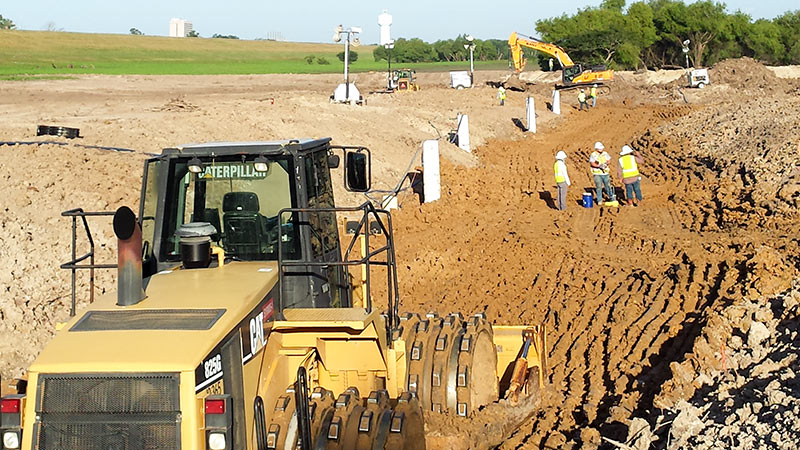 “. . . An undergound aqueduct probably won’t resolve the situation. However, this storm has made it pretty clear that having both Barker AND Addicks draining 100 percent into Buffalo Bayou may not be ideal. An addition channel that would allow USACE to divert some of the Barker outflow to Brays Bayou would allow for some flexibility.
While Brays DID flood during Harvey, the water receded very quickly, with the water back within its banks and falling quickly while Buffalo Bayou was still rising.” [
“. . . An undergound aqueduct probably won’t resolve the situation. However, this storm has made it pretty clear that having both Barker AND Addicks draining 100 percent into Buffalo Bayou may not be ideal. An addition channel that would allow USACE to divert some of the Barker outflow to Brays Bayou would allow for some flexibility.
While Brays DID flood during Harvey, the water receded very quickly, with the water back within its banks and falling quickly while Buffalo Bayou was still rising.” [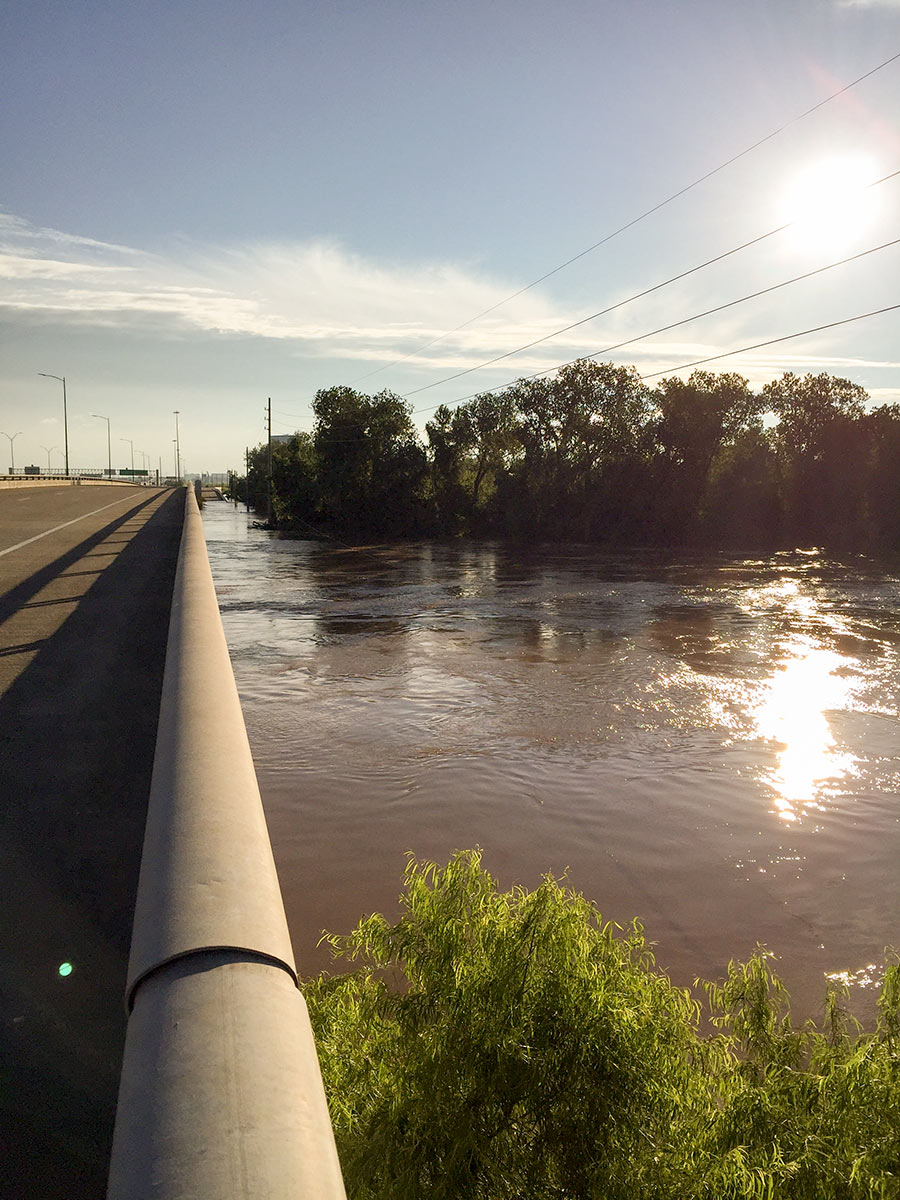 It wasn’t until early this morning that the Brazos River in Sugar Land and Richmond
It wasn’t until early this morning that the Brazos River in Sugar Land and Richmond 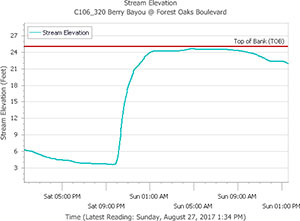 Chronicle features editor Lisa Gray says her Meadowcreek Village home escaped water damage during the flood, but it was close — and many others weren’t so lucky: “Berry Bayou — the middle of which forms my back property line,” she writes, “received more than 45 in. I’ve seen it in national weather-nerd articles where people are marveling how fast a bayou can rise. My husband says we were half an inch away from the bayou coming out of its bank in our back yard. He sent a graph, showing that on Saturday night, at the monitor I can see from my back yard, it was literally at bank level. But the water broke first on the other bank, into the yard of one of my favorite people in the neighborhood, and up and down the yards on that side. Lots of houses flooded. ‘Dry privilege’: That’s the headline of the essay I ought to write.” [
Chronicle features editor Lisa Gray says her Meadowcreek Village home escaped water damage during the flood, but it was close — and many others weren’t so lucky: “Berry Bayou — the middle of which forms my back property line,” she writes, “received more than 45 in. I’ve seen it in national weather-nerd articles where people are marveling how fast a bayou can rise. My husband says we were half an inch away from the bayou coming out of its bank in our back yard. He sent a graph, showing that on Saturday night, at the monitor I can see from my back yard, it was literally at bank level. But the water broke first on the other bank, into the yard of one of my favorite people in the neighborhood, and up and down the yards on that side. Lots of houses flooded. ‘Dry privilege’: That’s the headline of the essay I ought to write.” [

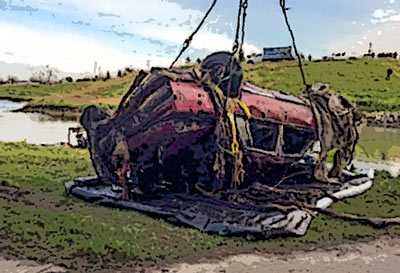 “. . . I suppose all those cars need to come out of the bayou, but I fear that will really mess up the fishing.” [
“. . . I suppose all those cars need to come out of the bayou, but I fear that will really mess up the fishing.” [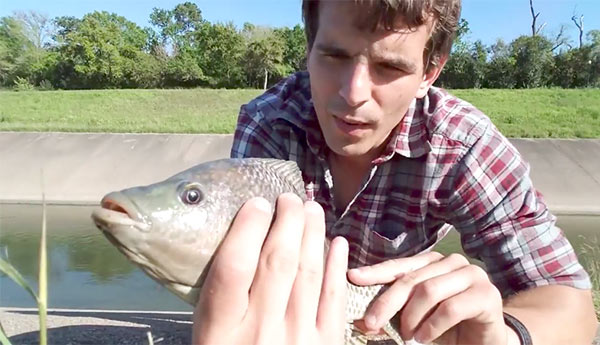 “The problem: I don’t think I would trust any of those fish to eat. Sure, you can catch and release, but I also don’t see the appeal of standing on the banks of a concrete ditch.” [
“The problem: I don’t think I would trust any of those fish to eat. Sure, you can catch and release, but I also don’t see the appeal of standing on the banks of a concrete ditch.” [ What kind of fish can an enterprising angler find in the wilds of inner-loop Brays Bayou? Episcopal priest and urban fly-fishing evangelist Mark Marmon tells the Chronicle‘s Shannon Tompkins he’s caught 18 different species in Brays Bayou alone, including largemouth bass, crappie, catfish, sunfish, Rio Grande perch, longnose gar, spotted gar, and white bass. But that’s just counting the natives. The biggest draws — and what you’re most likely to find — are the alien invaders, which include mullet, the aquarium-fugitive armored catfish known as plecostomus, tilapia, and grass carp, aka “Bellaire bonefish.” But you’ve got to know where to look for them: “They, like most fish in the bayou, tend to cluster around the mouth of ‘feeder’ creeks,” Tompkins reports. “They also like structure anomalies that create accelerated current or breaks in the current;
What kind of fish can an enterprising angler find in the wilds of inner-loop Brays Bayou? Episcopal priest and urban fly-fishing evangelist Mark Marmon tells the Chronicle‘s Shannon Tompkins he’s caught 18 different species in Brays Bayou alone, including largemouth bass, crappie, catfish, sunfish, Rio Grande perch, longnose gar, spotted gar, and white bass. But that’s just counting the natives. The biggest draws — and what you’re most likely to find — are the alien invaders, which include mullet, the aquarium-fugitive armored catfish known as plecostomus, tilapia, and grass carp, aka “Bellaire bonefish.” But you’ve got to know where to look for them: “They, like most fish in the bayou, tend to cluster around the mouth of ‘feeder’ creeks,” Tompkins reports. “They also like structure anomalies that create accelerated current or breaks in the current; 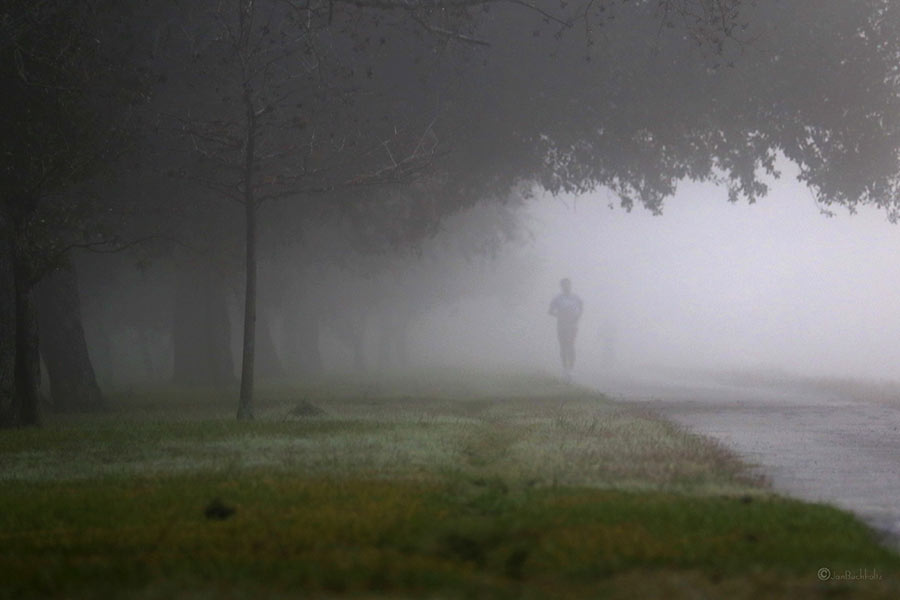 That sign posted just west of Chimney Rock declaring that the Brays Bayou trail “connects 31 miles of uninterrupted, off-street, multi-use trails and greenspace from the Ship Channel to George Bush Park and the Addicks-Barker Reservoir” is
That sign posted just west of Chimney Rock declaring that the Brays Bayou trail “connects 31 miles of uninterrupted, off-street, multi-use trails and greenspace from the Ship Channel to George Bush Park and the Addicks-Barker Reservoir” is 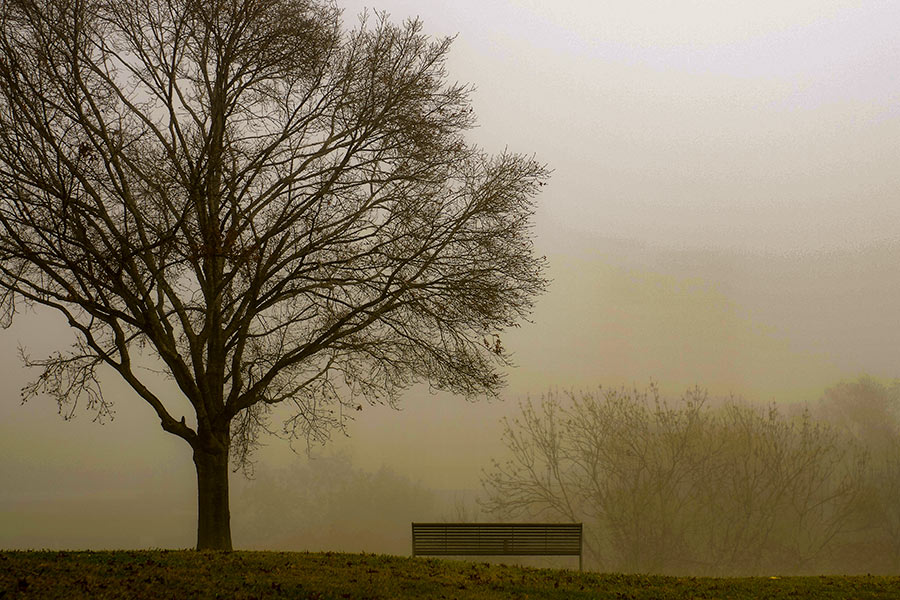 One Houston summer in the early 1960s: “My brother and his friends were playing, pretending they were WWII soldiers and they were running around shooting fake machine guns and then they would go over and jump in the bayou pretending it was a foxhole. And I went over and I heard them talking . . . they were going to build their own bomb. And I told them you know you better not do that. . . . The next thing I know I see them in the garage and they’ve got a bunch of my dad’s leftover firecrackers and they’re splitting them open and pouring them into this big prescription bottle. I tried to find my mother. And she ended up being next door. When I ran next door I was standing in the backyard and I heard this loud boom and looked at where the explosion came from and it was right where my brother and his friends had been playing. I heard sirens in the distance and a helicopter started flying real low over the pipeline. . . . Shortly after that there was a knock at the door and it was the police. . . . they said that
One Houston summer in the early 1960s: “My brother and his friends were playing, pretending they were WWII soldiers and they were running around shooting fake machine guns and then they would go over and jump in the bayou pretending it was a foxhole. And I went over and I heard them talking . . . they were going to build their own bomb. And I told them you know you better not do that. . . . The next thing I know I see them in the garage and they’ve got a bunch of my dad’s leftover firecrackers and they’re splitting them open and pouring them into this big prescription bottle. I tried to find my mother. And she ended up being next door. When I ran next door I was standing in the backyard and I heard this loud boom and looked at where the explosion came from and it was right where my brother and his friends had been playing. I heard sirens in the distance and a helicopter started flying real low over the pipeline. . . . Shortly after that there was a knock at the door and it was the police. . . . they said that 